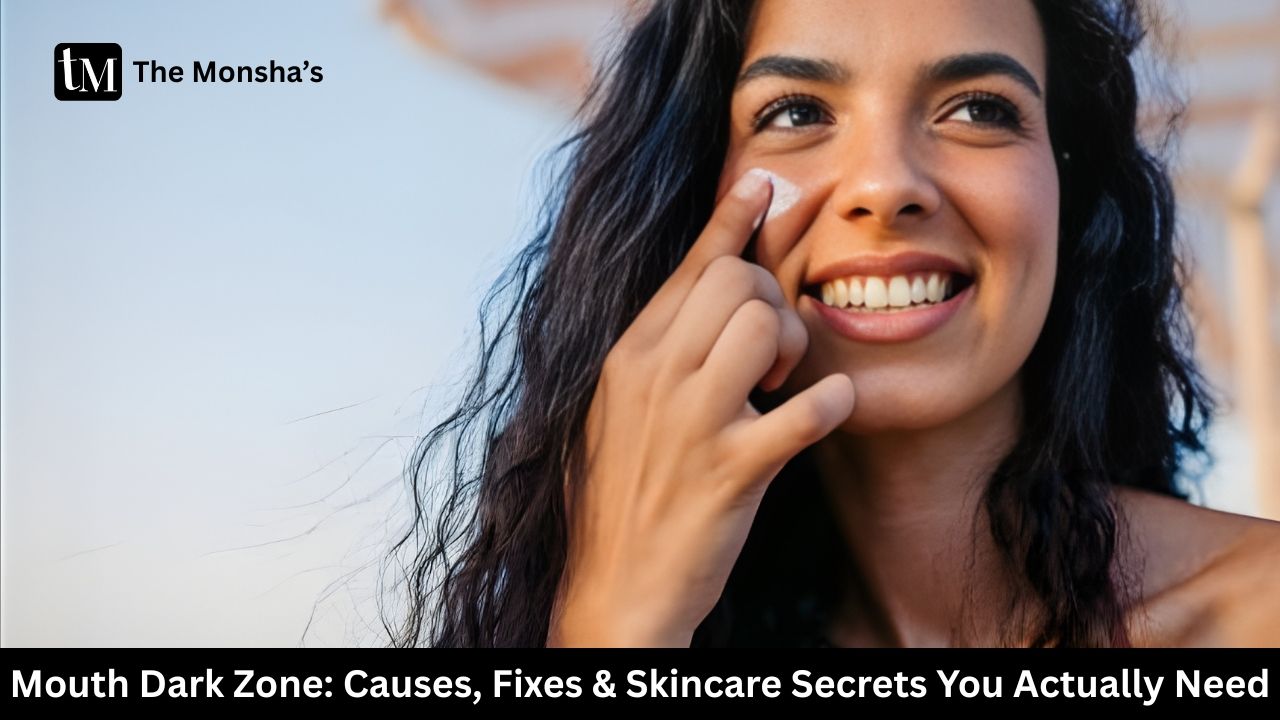“Kaali kaali raaton mein… mera mooh bhi ho gaya kaala kaala re” 🎶(Yes, even my bathroom singing is dedicated to that mysterious dark halo around my lips. Kya karein, yeh pigment bhi filmy hai 😩).
If you’ve been staring at a darker ring or shadow around your mouth, you’re not alone. It’s one of the most common skin concerns I see DM’d to me — and nope, it’s not “dirt” or “bad hygiene.” As your slightly tired, very real beauty blogger with too many tubes of niacinamide at home, I’m breaking down why it happens and what actually works.
📝 TL;DR — The Quick Tea ☕
- That “blackness” is usually hyperpigmentation or perioral discoloration, not dirt.
- Causes range from sun exposure and hormones to friction, products, or deficiencies.
- Treatments work best when you protect + treat + repair (SPF + actives + barrier care).
- Results take patience — no “overnight miracle” creams here.
- Hindi gist: “Yeh daag acche nahi hote… but manageable hai.”
🧠 What Is “Blackness Around the Mouth”?
Dermatologists call it perioral hyperpigmentation — basically, extra melanin in that area, making the skin look darker than surrounding zones. It’s super common in Indian and deeper skin tones because our melanocytes are already very active. It can show as a faint halo, a moustache-like patch, or distinct dark corners near the lips.
⚠️ Common Causes of Dark Patches
Hormonal & Internal Triggers
- Melasma or “sun moustache” triggered by hormones + UV
- Thyroid issues or vitamin deficiencies (B12, iron) can make pigment worse
External Irritants
- Fragranced lip balms, certain toothpastes, harsh cleansers
- Constant lip-licking or wiping (friction = pigment)
Sun Exposure
- UV & even visible light trigger melanocytes — and we often forget to apply SPF to upper lip area
Post-Inflammatory Hyperpigmentation
- Leftover dark marks from acne, rashes, or shaving/waxing trauma
🧪 How the Skin Actually Darkens — The Science Bit
Melanin is your skin’s natural pigment. When skin gets inflamed or exposed to UV, melanocytes go into overdrive. In darker skin tones, pigment cells are more reactive, so every little irritation can leave a long-lasting mark. Add hormones to the mix, and boom — the “perioral shadow” shows up.
💡 Treatment & Skincare Strategies
There’s no one-size-fits-all, but most dermatologists recommend a 3-step approach:
- Protection – Daily SPF (broad-spectrum, with iron oxide for visible light)
- Correction – Gentle brightening actives
- Barrier Repair – Calm inflammation so pigment doesn’t worsen
Topical Actives
- Niacinamide — reduces melanin transfer, gentle for daily use
- Azelaic acid — anti-inflammatory + pigment fading
- Kojic acid, arbutin, licorice extract — botanical brighteners
- Mild retinoids — speed up cell turnover (night use)
In-Clinic Options
- Superficial chemical peels (glycolic, lactic, mandelic) under pro supervision
- Low-fluence laser or light therapies — only with dermatologists experienced in darker skin
- Prescription creams (hydroquinone, triple combos) — short-term under medical guidance
Daily Habits
- Switch to non-fragranced toothpaste & balms
- Avoid scrubbing or harsh exfoliants around lips
- Apply SPF beyond just your cheeks — upper lip, corners included
- Maintain a balanced diet & check deficiencies with a doctor
📊 Treatments & Suitability Table

(Notice how nothing promises “instant” — because skin biology doesn’t work like that 😅)
🧴 Routine & Lifestyle Tips
- Cleanse gently — no foaming frenzy around the mouth
- Hydrate + moisturize — barrier healing accelerates fading
- Patience & consistency — take pics monthly, not daily, to track progress
- Bonus desi hack: chilled aloe pulp + a drop of vitamin E as a soothing mask for the area (patch test first)
🚩 When to See a Dermatologist
- Sudden dark patches spreading fast
- Itchy, painful, or scaling spots (may be dermatitis or infection)
- Pigment not improving after 8–12 weeks of proper care
Professional diagnosis rules out hormonal, allergic, or systemic causes and gets you the right treatment early.
🙋♀️ FAQs
Q: Can toothpaste really darken the skin around my mouth?
A: Yes — certain strong flavors or fluoride can irritate and cause pigmentation in sensitive skin.
Q: Will bleaching creams work?
A: Most OTC “skin lightening” creams are harsh and can rebound pigment. Stick to dermatologist-approved actives.
Q: How long till I see results?
A: With consistent SPF + actives, mild cases may fade in 6–12 weeks; stubborn cases longer.
Q: Is it permanent?
A: Usually no — but you must control the trigger (sun, hormones, friction) for it to fade and not recur.
🎯 Final Takeaway — Fading the “Perioral Shadow”
This isn’t a hygiene issue. It’s pigment biology. Protect your skin from sun, irritants, and harsh scrubs, then layer in gentle actives. Be patient — fading hyperpigmentation is a marathon, not a sprint.
And remember: “Jo daag yahan hai, woh fade ho sakta hai — bas sahi rasta chuno.” 💁♀️✨

